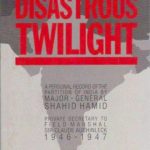As is evident from the present Ladakh crisis, Indian diplomacy, to put it politely, has fallen short
By Pravin Sawhney
Describing China’s approach to border disputes, a foreign diplomat who has had several years of experience negotiating with China, said, “A Chinese stands on the border and takes a broad sweep of the neighbour’s land. Then he takes off his hat and throws it across the border. A while later, he points to the hat on the neighbour’s land and says, ‘that hat has been there since antiquity. It proves that this has historically been my land’.”
As the Ladakh crisis becomes more protracted than initially expected, the hat analogy sums up India’s dilemma. Howsoever the negotiations between India and China unfold, two stark realities are obvious: The existing diplomatic framework crafted by the 1993 agreement of peace and tranquility for containing volatility along the Line of Actual Control (LAC) has been jettisoned by China. Moreover, the illusion of the Indian Army’s two-front war capability created in 2009 has been shattered. A reset is needed.
The PLA has ruled out restoring the status quo ante of April 2020. Disengagement talks are now in their fifth round. According to military sources, de-escalation or the pulling back of forces including tanks, artillery guns, air defence equipment, electronic warfare vehicles etc will only happen once the Indian Army signs the minutes conforming to the PLA’s new positions on the ground. And that is an obvious roadblock.
In the past four months, China has moved the LAC as India understood it after 1993 to well inside Indian Territory. This ranges from 1.5km in some places to 4.5km in others. And as it usually does, China has offered a legal argument to justify its new positions on the ground. It says that the 1993 agreement, which created the LAC, was merely a legal document, signed by the two countries to maintain peace and tranquillity and says nothing about where the line lies. Which is, of course, technically correct.
The line itself was ‘created’ in November 1959 (albeit unilaterally) when Chinese Premier Zhou Enlai wrote to Prime Minister Jawaharlal Nehru offering a package deal for border resolution. In that letter, he had mentioned the “line up to which each side exercises actual control” in Ladakh. In 1960, taking forward the Zhou-Nehru correspondence, India and China held a series of discussions on the LAC.
The coordinates that the Chinese interlocutors provided to their Indian counterparts marked the LAC substantially west of the 1959 claim line. The talks, of course, were unsuccessful and the matter of the LAC rested there, the 1962 war notwithstanding. Fast forward to 1993. India and China signed the agreement on the LAC without demarcation and delineation (neither on maps nor on the ground) for the simple objective of maintaining, well, peace and tranquility.
Of course, the line which India believed to be the LAC according to the 1993 agreement may not have been where the Chinese said it lies. For that, Beijing’s reference point was its 19059-60 claim lines. This was clearly a recipe for tension and even violence, but the peace held till May-June 2020. On May 5, moving in to areas demarcated by its claim lines, the PLA crossed the 1993 LAC and came well inside what was known to India as Indian land. Furthermore, in certain areas it crossed its 1959-1960 claims line as well.
The reason why, from the Indian perspective, de-escalation will not only be long drawn, but extremely difficult too is because the gap between two perspectives is simply too vast. For instance, the PLA has blamed the Indian Army for the June 15 Galwan killings. It claims that in the June 6 corps commanders meeting, the terms of disengagement were discussed and agreed upon.
The official Chinese view is that it was conveyed to the Indian side that the estuary in the Galwan valley was the LAC, and both sides could set up tents for observation on either side of it. Yet, on the evening of June 15, the Indian soldiers, in violation of the agreement dismantled the PLA tents leading to the unfortunate killings which neither side wanted. To buttress their argument, the Chinese side point to Prime Minister Narendra Modi’s June 19 statement that no one has intruded, nor is sitting on Indian Territory.
Sitting snug on Indian territory in Ladakh covering the entire arc from Depsang to Demchok and having given the terms for peace to the Indian interlocutors, China awaits Delhi’s response with the possibility of walking back half-way. By delinking the 1993 agreement from the creation of the LAC, China has effectively eviscerated the line which was the border for all practical purposes for the last 27 years and was known to the Indian Army as the LAC.
Clearly, China has turned the tables on India. Used to taking a long-term view, China had outsmarted India in the signing of the 1993 agreement. To understand the enormity of the quagmire that India finds itself in today, it is important to recall how exactly the 1993 LAC came about and what propelled India to sign upon a line without delineating or demarcating it.
Genesis of 1993 agreement
Interestingly, many of these details have been given in the book, Choices, written by former national security advisor, Shivshankar Menon the originator and the most vocal supporter of the 1993 agreement. Even in 1992-93, Menon had the reputation of being a China expert in the Indian Foreign Service, having spent nearly eight years in that country over two postings.
P.V. Narasimha Rao, prime minister at the time, was the second head of government after Rajiv Gandhi to visit China after diplomatic ties were restored, and it was felt that his visit should be a success even grander than that of Gandhi’s. Foreign secretary J.N. Dixit consulted China-hand Menon, who proposed that India and China sign a peace agreement by accepting the existing military positions on the disputed border without prejudice to each other’s stated positions. The line, marking existing military positions, could be called the line of peace or tranquillity.
The Chinese found the proposal interesting. However, they insisted on calling the peace line the Line of Active Control. Menon writes, “It seemed very important to China that Indian negotiators accept the term ‘Line of Active Control’ at the beginning of the negotiation.” The term was later changed to Line of Actual Control, the phrase that Zhou had used in his official letter to Nehru in November 1959.
Oblivious to the fact that the term LAC had deep military connotation, the Indian side, believing the Chinese attach importance to traditional terms, accepted the Chinese suggestion. In any case, Indian diplomats felt that name of the line didn’t matter much since “India had inserted a provision that both sides would mutually agree on and clarify the LAC wherever necessary in the draft of the agreement.”
Assessing, rightly, that the Indians were keen to make Rao’s visit a success, the Chinese then presented another roadblock. They told Indian interlocutors that the PLA would need time to be convinced to clarify the LAC beforehand. Menon writes, “Chinese foreign office mandarins seemed hard pressed to justify this position to us, finally saying privately that they had no leeway as the PLA were insistent.” Thus, the agreement was signed.
However, “The 1993 agreement created an expert group of diplomats and military personnel to advice on the resolution of differences between the two sides on the alignment of the line of actual control.” This was never done, forcing India to adopt a policy of appeasement on the LAC. To the innumerable and regular transgressions of the LAC by the PLA, India’s official position was that both sides inadvertently transgressed while patrolling since the LAC is not defined. This charade was finally ended by the MEA statement of May 21, 2020. It said that India was aware of how the LAC ran on the ground and the Indian Army never violated it.
From line of actual control to buffer zones
The Ladakh crisis of 2020 has exposed the vacuity of Indian policy-making. The 1993 agreement did not win peace. It bought temporary peace at a high cost. And the price has been heavy: On the one hand, military preparedness and infrastructure building on the LAC was neglected with too much dependency on diplomacy. On the other hand, military leaders, obsessed with Pakistan, failed to keep track of the upwards trajectory of the PLA’s military capabilities.
On disengagement, which is India’s immediate concern, an interesting suggestion has been made by Qian Feng, a senior fellow at the Taihe Institute, Beijing. He writes in the August issue of FORCE, “The concept of ‘zone of actual control’ can replace the concept of ‘line of actual control’ in some areas without human population or obvious natural geomorphological features. In the future, the two countries could go beyond the traditional ‘border line’ approach and adopt the method of delimiting the disputed ‘border belt’ in questions which do not involve population adjustment.”
Since the Taihe Institute is a prominent think-tank, Qian could not have written this without appropriate clearance. What this means is that the demilitarised buffer zone lying between the 1993 LAC and China’s traditional claim lines would be on Indian Territory. This suggestion, according to sources, has been officially stated by China, and perhaps explains the paradoxical statement made by defence minister, Rajnath Singh on July 17. While assuring soldiers that ‘not an inch of our land can be taken by any power in the world’, he expressed uncertainty over how ‘the matter should get resolved.’
India’s options
Coming to the present, what are India’s options? There are no military options. All military options spoken of by veterans are nothing more than updated old military plans. Few seem aware that warfare has changed and is well on the transformational trajectory where the PLA is a global player and would fight to its strengths in the new virtual war domains. The PLA’s other strength is its projectile-centric strategy built around its ballistic, cruise and hypersonic missiles, unmatched by India.
Moreover, the Indian Army’s two-front war strategy was never a serious proposition. It was not based on comprehensive threat assessment by all three services. The main argument made by the army under General Deepak Kapoor in favour of new strike corps in 2009 was that since shifting of dual-task forces would not be possible from Line of Control to Line of Actual Control and vice versa in the time frame available for readiness of additional forces, dedicated capabilities would be needed on each front.
However, in January 2020, the army chief, General M.M. Naravane asserted that dual task forces would be the basis of two-front war strategy. At his maiden media interaction, Gen. Naravane said that there would be two fronts primary and secondary. Since both fronts were unlikely to become live at the time, the bulk of forces (including dual task forces) would be available to the primary front, while the other front would be held defensively.
Thus, within the army, there seems to be a lack of consensus on how the two-front war strategy would play out. On the positive side though, Gen. Naravane made an effort to start the military strategy debate by saying that there was a need to balance forces to cater for the west (Pakistan) and north (China). Unfortunately, these decisions are now beyond his domain and would be taken by the Chief of Defence Staff, General Bipin Rawat.
Fixated on Pakistan and counter-terror operations, Gen. Rawat, on becoming CDS, has gone ahead with massive military reforms to eventually create theatre commands dedicated to Pakistan, China and the Indian Ocean Region. He announced that operations based upon the army’s Integrated Battle Groups (IBGs) would be supported by the other services. What did not strike him was the futility of having IBGs for the Pakistan military and the PLA with dissimilar war-fighting strategies.
The Pakistan military, like the Indian military, would fight upgraded mechanised warfare, with little jointness amongst the services, reminiscent of World War II. The PLA, on the other hand, had embarked upon Network Centric Warfare renamed ‘informationised warfare’ after studying the US-led 1991 Gulf War campaign. In 2015, after its military reforms, it started extensive joint training amongst all war domains of land, air, sea, and electro-magnetic spectrum.
It has also invested heavily in intelligentised or algorithm warfare and new disruptive technologies. Thus, the PLA has combined elements of informationised and intelligentised warfare, creating unpredictability in its operations, which has got the US military worried about losing its military edge. Given the disparate strategies of the Pakistan military and the PLA and both fronts having become active, it will not be possible to continue with the pretence of fighting on two fronts.
Moreover, there is growing interoperability between the two adversary militaries, which would compel the Indian military to seriously consider the new and bigger threat of a reinforced single front: Pakistan fighting with the full operational support of the PLA. As is evident from the present Ladakh crisis, Indian diplomacy, to put it politely, has fallen short. Driven by its military power, China’s diplomacy hinges on a show of strength and has no time for bilateral agreements or understanding. It will do what it wants, based on what it can. After all, how far the hat is thrown depends upon how strong the hands of the thrower are.
Pravin Sawhney is editor FORCE news magazine.







